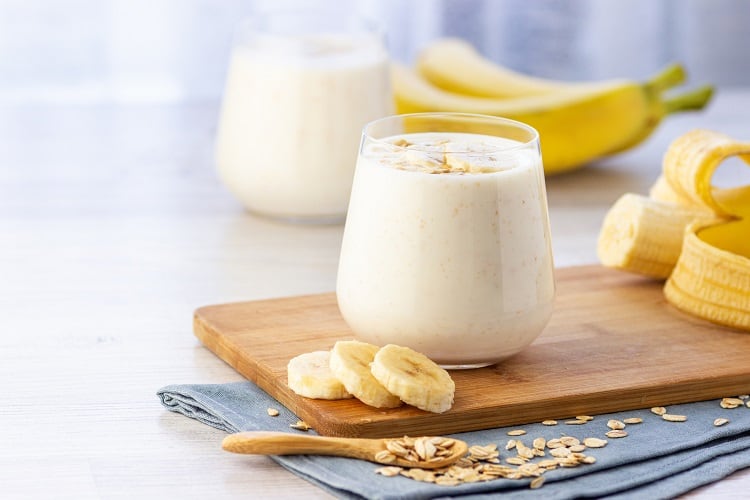The plant-based dairy alternatives market is booming. According to Fortune Business Insights, the sector is projected to grow from $25.19bn (€20.93bn) this year to $61.43bn by 2029, at a healthy CAGR of 13.58%.
Ingredients majors CP Kelco and Chr. Hansen similarly predict growth in this market, noting that shelf-stable alt dairy products in particular can help manufacturers and retailers reduce food waste and increase geographical reach.
From the consumer perspective, ambient-stable products offer convenience. But the suppliers – headquartered in the US and Denmark respectively – suggest that convenience alone is not enough: consumers are unwilling to compromise on taste, nutrition, nor the ‘naturalness’ of shelf-stable, plant-based products.
In response, CP Kelco and Chr. Hansen have joined forces to take ambient, plant-based yoghurt alternatives, which they call ‘vegurts’, to the ‘next level’.
Co-development to meet market requirements
Together, the companies have produced ‘industrially validated’ prototypes of drinkable and spoonable ‘vegurts’, made with either oat, soy, pea, coconut, or almond bases.
“By working together, we have been able to unlock the synergies between ingredients and process to produce a variety of desired thicknesses and mouthfeel,” explained Christian Gilleladen, Principal Application Scientist at Chr. Hansen.
The co-development process was truly collaborative, Gilleladen suggested. “These samples aim to show that by working together the collaboration can produce great tasting and nutritional ambient vegurts with a range of textures and across a variety of different plant bases.
“The technical and commercial teams met often in each other’s development laboratories to ensure that the products aligned to market requirements and to advance product development.”
Anne Sinha, Marketing Director at CP Kelco, added: “We used our global expertise in ambient yoghurt to find the right stabilising system and ensure great texture and mouthfeel over shelf life.”
Formulation challenges
What are they primary challenges when developing ambient, plant-based yoghurt alternatives?
According to Chr. Hansen’s Gilleladen, one of the main challenges lies in developing cultures that can robustly ferment the plant bases, removing the strong vegetal flavour notes, and developing fresh fermentation flavours.
“Another significant challenge is to find the right stabiliser systems to ensure smooth and stable texture at the required level through the high shear processing required and throughout shelf life at ambient temperature,” he told FoodNavigator.
For CP Kelco, too, ensuring stability is a primary concern. “Challenges arise initially because the molecular structure and functionality of plant proteins are different than dairy protein. The plant bases themselves are also unique: working with oat is different than coconut or almond,” Sinha explained.
“Additionally, most dairy alternatives are fortified with extra protein, calcium and vitamins, which require help to ensure they all stay evenly suspended. Then, there is the recipe, which requires help ensuring protein stabilisation to prevent aggregation over time in an acidic system and going through the heat treatment.
“We want to ensure stability over the shelf life and also deliver the right mouthfeel.”
Ambient alt yoghurt ‘relatively new’ to Europe and US
Globally, the ambient plant-based yoghurt category is not new. Most plant-based ‘milks’ are produced using ambient processing, allowing the products to be sold in either ambient or chilled shelves in retail, Gilleladen pointed out.
“There are a number of producers already selling ambient plant-based yoghurt alternatives (or as well call them, ‘vegurts’), although most producers of vegurts have launched into the chilled shelves to date with low/no proteins and are less nutritional.”
Ambient drinking yoghurts – both dairy and plant-based – have been popular for years in regions outside of Europe, such as China. Dairy-based ambient yoghurts have also gained some traction in the Middle East, India (salted buttermilk), Africa and Latin America, CP Kelco’s Sinha told this publication.
“However, ambient vegurts are a relatively new category for the rest of the world, including Europe and North America.”
What will drive consumer demand?
Despite the ‘vegurt’ category being relatively new to these geographies, both suppliers are convinced their co-developed solutions will meet a variety of consumer demands ranging from convenience, taste, nutrition, and reduced food waste.
Ambient products offer significant advantages in terms of sustainability, cost, flexibility in channel strategy including e-commerce, and market reach, explained Gilleladen. “The ambient dairy alternative milks have already taken a significant share of the dairy milk [market], being more convenient as well.”
For consumers, Gilleladen believes the ‘biggest barrier’ to regular consumption of vegurts relates to products’ poor taste and mouthfeel compared to dairy equivalents. “The ambient products the collaboration has developed taste great across a range of bases and textures, and offer the convenience of consumption at home or on-the-go.”
From CP Kelco’s perspective, the ambient yoghurt alternative category aligns with several trends, including ‘good for you’ protein-packed snacking. In addition, products with a longer shelf life offer ‘great value to consumers, manufacturers, and our planet’, said Sinha.
“So much still-edible food is thrown away based on a sell-by date on a label…In addition, ambient products offer manufacturers the ability to sell via e-commerce and in markets where cold chain distribution is not developed.
“Consumers also appreciate that they can stock up and store products without worrying about refrigeration too. For example, ambient yoghurt can stay in a child’s backpack until snack time.”




